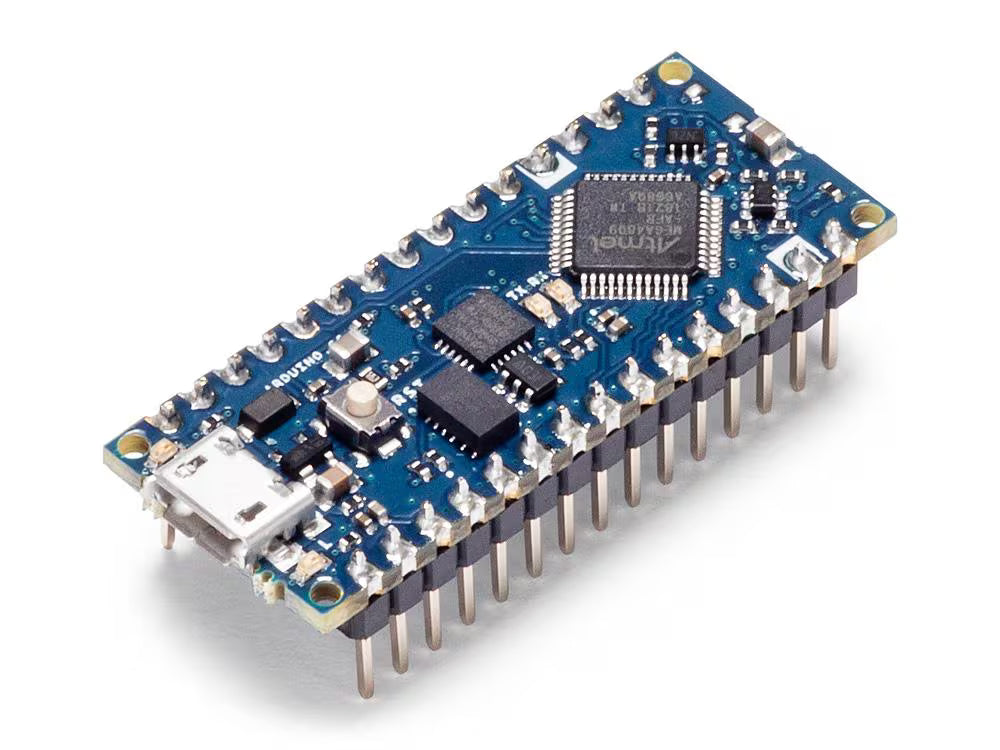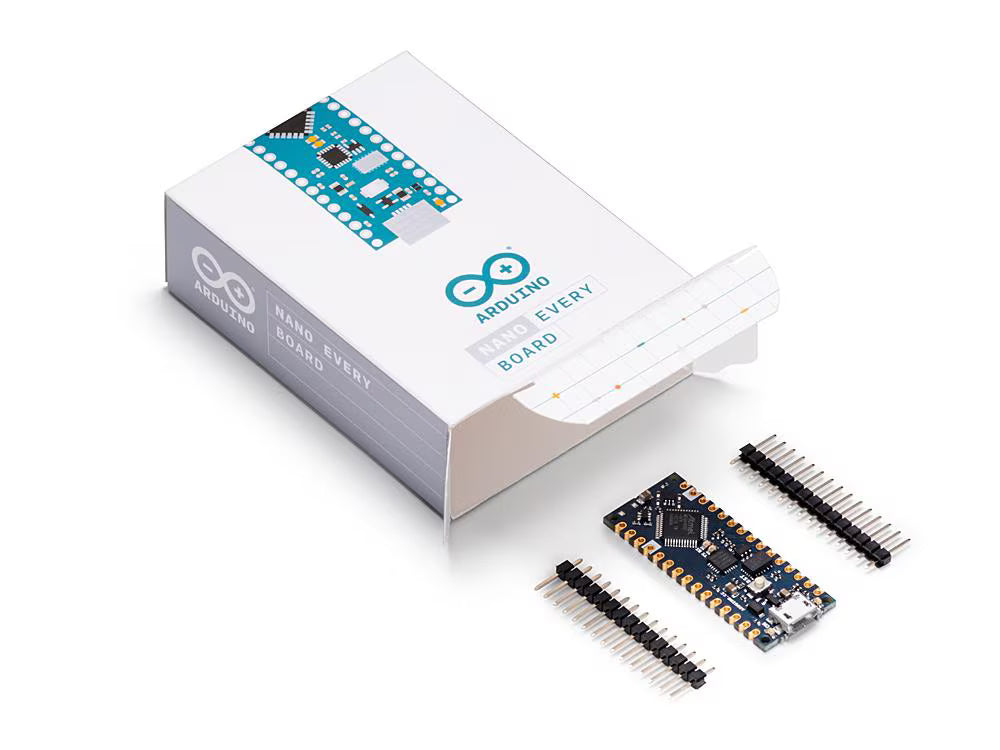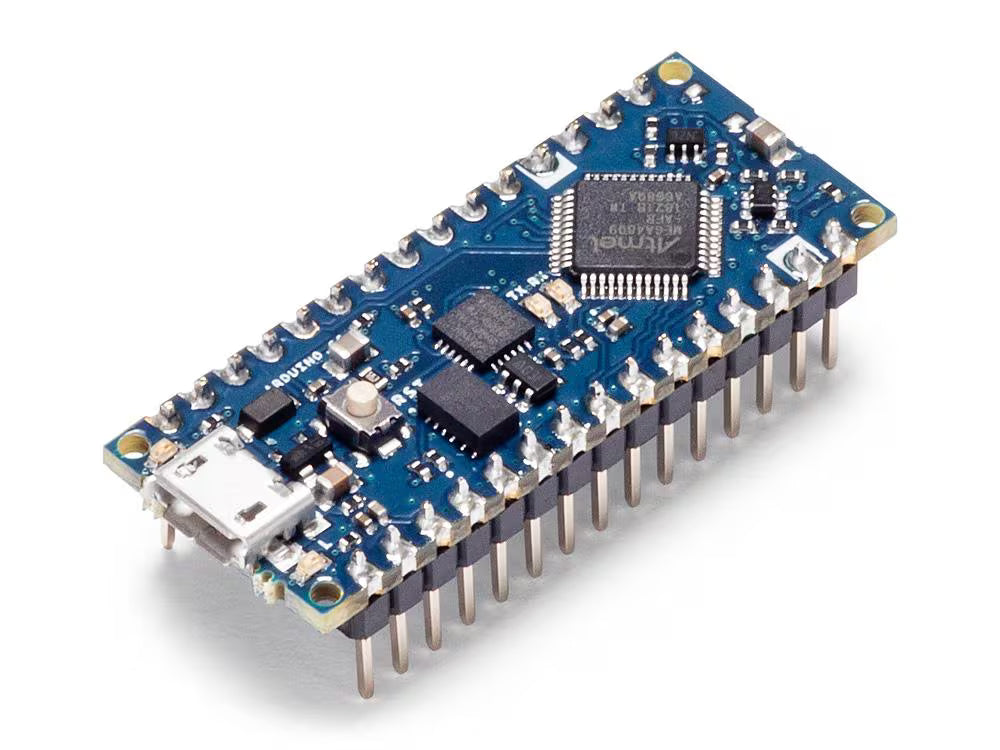Arduino Nano Every – Compact ATmega4809 Development Board from Circuitrocks is ideal for DIY electronics builds.
Great for Arduino, ESP32, Raspberry Pi, and robotics or school projects here in the Philippines.
Arduino® Nano Every upgrades the beloved Nano format with a faster ATmega4809 @ 20 MHz, more memory, and the same breadboard-friendly 5 V design. It’s a compact workhorse for classrooms, wearables, sensor hubs, and robotics projects in the Philippines—drop it on a breadboard and start building.
Small Board, Big Upgrade — Nano Every (20 MHz, 5 V)
- More headroom than classic Nano/UNO: 48 KB flash and 6 KB SRAM for larger sketches and buffers.
- 5 V logic & familiar pinout: Minimal porting—works with common sensors, displays and modules.
- Micro-USB & tiny footprint: Clean cabling, 45 × 18 mm board fits tight builds and enclosures.
- Beginner-friendly: Arduino IDE support, examples, and massive community resources.
What you can build
- Wearables & handheld UIs: 0.96″–1.3″ OLED + encoder/buttons + buzzer
- IoT sensor nodes: environment (BME280/DHT22), distance (HC-SR04/ToF), light/air-quality
- Robotics: 2WD/4WD micro-bots with TB6612FNG/L9110, IMU, line sensors
- Data loggers: microSD + RTC in a tiny project box
Starter bundles (quick picks)
- Nano Every Learning Kit: board + USB Micro-B cable + breadboard & jumpers + sensor pack
- Compact UI: board + I²C OLED + rotary encoder + piezo buzzer
- Micro Robot: board + TB6612FNG driver + 2WD chassis + battery/PSU
Recommended add-ons
- USB Micro-B cable (data-capable)
- Sensor packs & displays (OLED/LCD/TFT)
- Header pins or pre-soldered variants for breadboards
- 5V/9V/12V power supplies & 5.5×2.1 mm adapters
- Tools & multimeter for bring-up
- Cases & mounting (mini boxes, DIN-rail)
Technical specifications
| Microcontroller | ATmega4809 (8-bit AVR) @ 20 MHz |
| Operating voltage | 5 V logic |
| VIN (input range) | 7–21 V via VIN |
| Flash / SRAM / EEPROM | 48 KB / 6 KB / 256 B |
| Digital I/O | 14 (D0–D13), PWM: 5 (D3, D5, D6, D9, D10) |
| Analog inputs | 8 (A0–A7) — note: A6/A7 are analog-only |
| Interfaces | UART ×1, I²C ×1, SPI ×1 |
| USB | Micro-USB (USB bridge: ATSAMD11) |
| On-board | LED_BUILTIN (D13), reset, ICSP |
| Size / weight | 45 × 18 mm / ~5 g (with headers) |
Pinout & power notes
- A6/A7: analog-only (no digital I/O on these pins).
- SPI via ICSP: use the 6-pin ICSP header for reliable SPI across boards/shields.
- 5 V logic: If a module is 3.3 V-only, add a logic level converter.
- Power: Power from Micro-USB or VIN; keep cables short to avoid voltage drop.
What’s in the box
- Arduino Nano Every board (with or without headers—see variants/photos)
Compatibility & notes
- Same footprint as classic Nano: fits standard breadboards and carrier boards.
- Library support: Works in the Arduino IDE; most Nano/UNO-era libraries compile with little or no changes.
- Compared to UNO R3: more flash/SRAM and 20 MHz clock in a smaller board; still 5 V logic for easy module compatibility.
FAQs – Arduino Nano Every (Philippines)
Is Nano Every beginner-friendly?
Yes—breadboard-ready and fully supported in the Arduino IDE, with examples and community tutorials.
Which cable do I need?
Use a USB Micro-B data cable (not charge-only) for programming and power.
What voltage does it use?
5 V logic. Power via Micro-USB or VIN (7–21 V). For 3.3 V-only modules, add a level shifter.
Do you ship nationwide and handle school/corporate orders?
Yes. We ship nationwide across the Philippines and can prepare classroom bundles and bulk quotations on request.
Arduino Nano Every – Compact ATmega4809 Development Board
Arduino Nano Every – Compact ATmega4809 Development Board
Out of stock
Product Code
SKU:ABX00028
Regular price
₱ 1,406.00
Regular price
Sale price
₱ 1,406.00
Unit price
per
Couldn't load pickup availability












